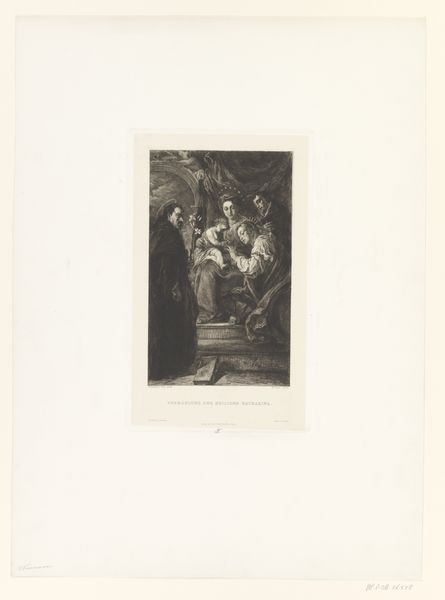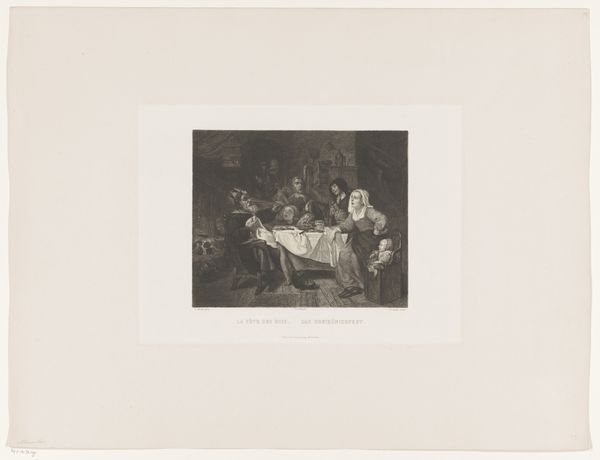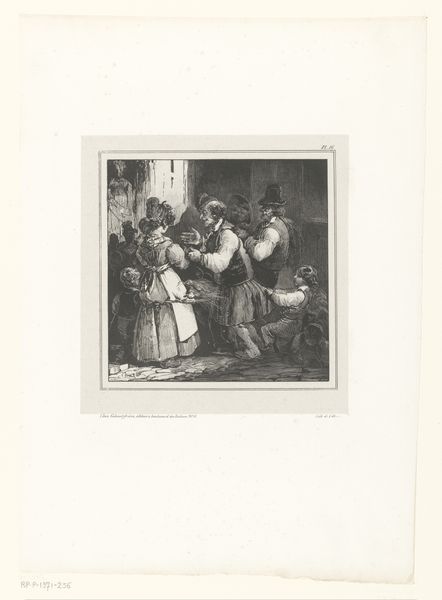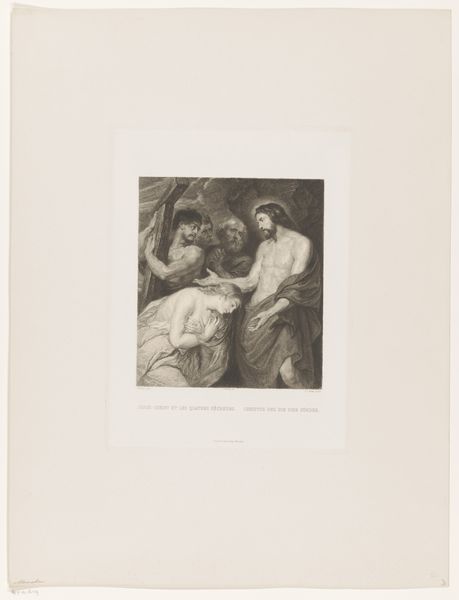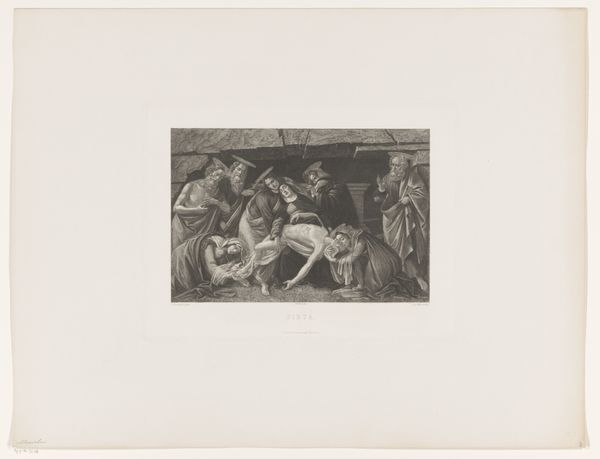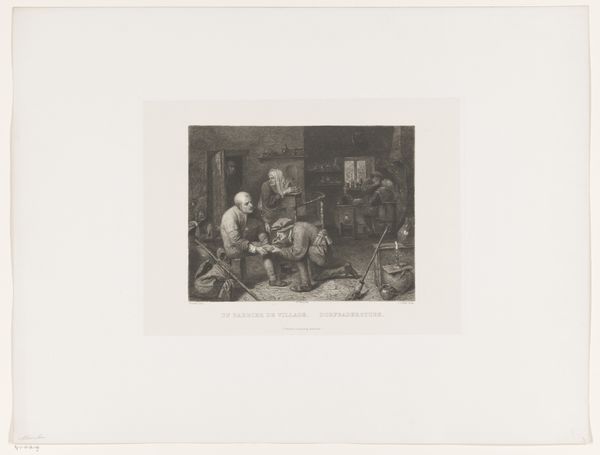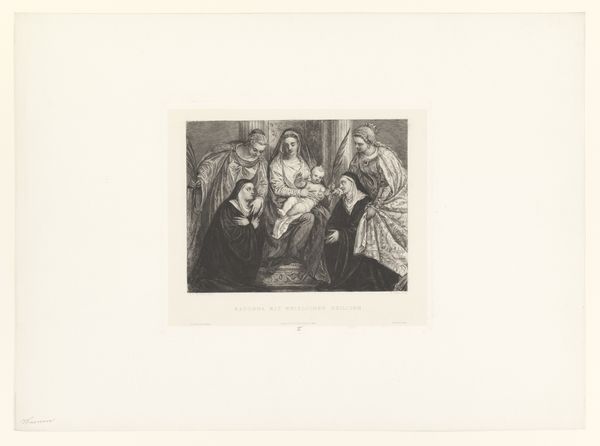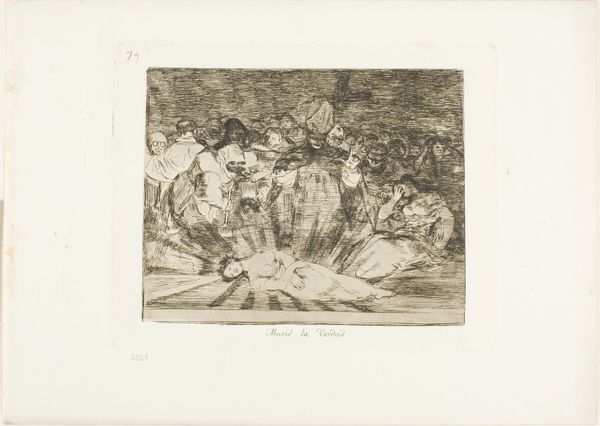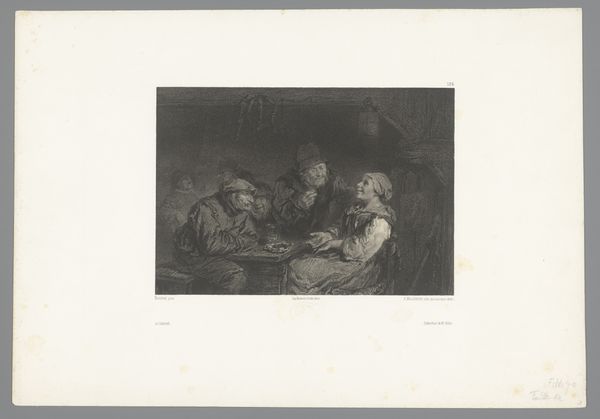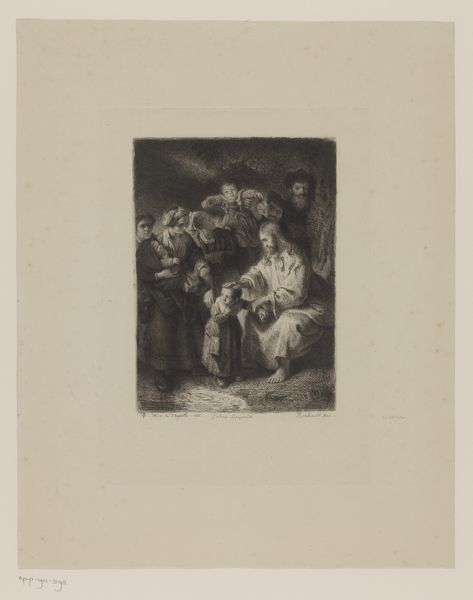
print, etching, paper
#
portrait
#
medieval
#
narrative-art
# print
#
etching
#
figuration
#
paper
#
line
#
genre-painting
#
history-painting
Dimensions: height 278 mm, width 328 mm
Copyright: Rijks Museum: Open Domain
Editor: So, this is William Unger's etching, "The Twelve-Year-Old Christ in the Temple," created between 1861 and 1889. It's currently held at the Rijksmuseum. It feels very theatrical to me, almost like a stage play. How do you interpret this work? Curator: This etching presents a compelling moment of youthful defiance within established power structures. Consider the socio-political climate of the 19th century, particularly regarding religious authority and emerging secular thought. How does Unger, through his use of light and shadow, depict Christ's challenge to the temple elders? What power dynamics are being represented and potentially subverted through this narrative? Editor: That's a good point about power. It feels like Christ's youth is significant – that Unger is making a comment about established structures of power being overturned. Curator: Exactly! Unger isn’t just illustrating a biblical scene; he is potentially offering a commentary on social hierarchies and the questioning of tradition. Think about the rise of scientific inquiry and the critique of religious dogma during this period. Could this image also be read as a visual metaphor for those intellectual battles? Does this maybe influence how we understand faith now? Editor: It does reframe the narrative somewhat, seeing it less as purely religious and more as a broader challenge to authority, relevant even today. Curator: Precisely. The composition, the expressions, and the medium itself – a print, making the image widely accessible – all contribute to a potent message about the potential for even the young and marginalized to challenge established norms. Editor: That’s fascinating. I’ll never look at it the same way again! Curator: And hopefully, thinking about art in this context, from the place of the creator’s experience, allows you to think about new ways to interpret meaning.
Comments
No comments
Be the first to comment and join the conversation on the ultimate creative platform.
